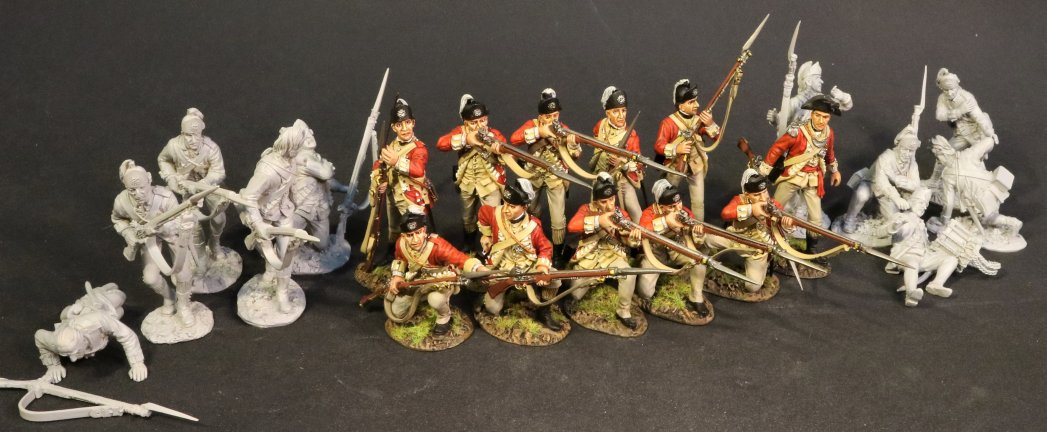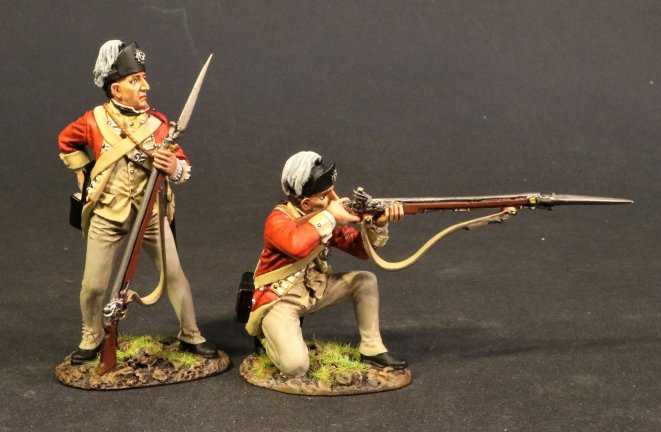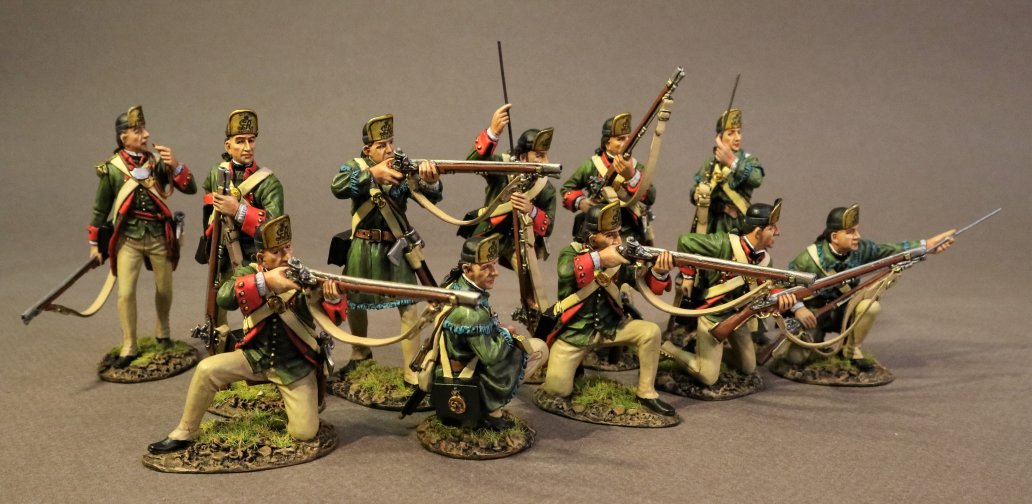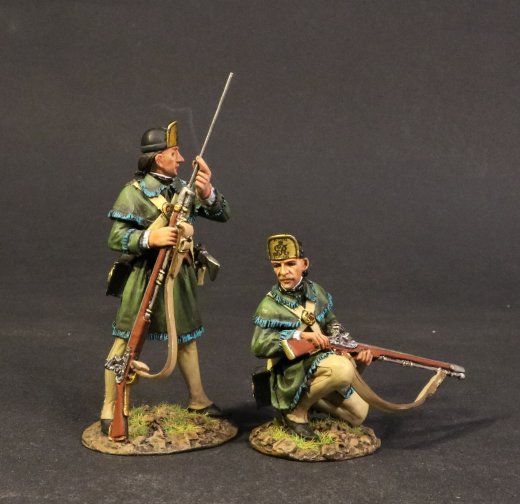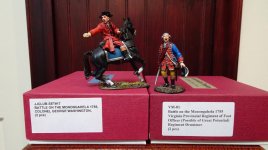NEW RELEASES FOR DECEMBER 2019
THE EIGHTEENTH CENTURY COLLECTION
DRUMS ALONG THE MOHAWK
George Washington (February 22, 1732 – December 14, 1799) commanded the Continental Army in the American Revolutionary War (1775–1783).
In the early years of the war Washington was often in the middle of the action, first directing the Siege of Boston to its successful conclusion, but then losing New York City and almost losing New Jersey before winning surprising and decisive victories at Trenton and Princeton at the end of the 1776 campaign season. At the end of the year in both 1775 and 1776, he had to deal with expiring enlistments, since the Congress had only authorized the army's existence for single years. With the 1777 establishment of a more permanent army structure and the introduction of three-year enlistments, Washington built a reliable stable of experienced troops, although hard currency and supplies of all types were difficult to come by. In 1777 Washington was again defeated in the defense of Philadelphia, but sent critical support to Horatio Gates that made the defeat of Burgoyne at Saratoga possible. Following a difficult winter at Valley Forge and the entry of France into the war in 1778, Washington followed the British army as it withdrew from Philadelphia back to New York, and fought an ultimately inconclusive battle at Monmouth Court House in New Jersey.
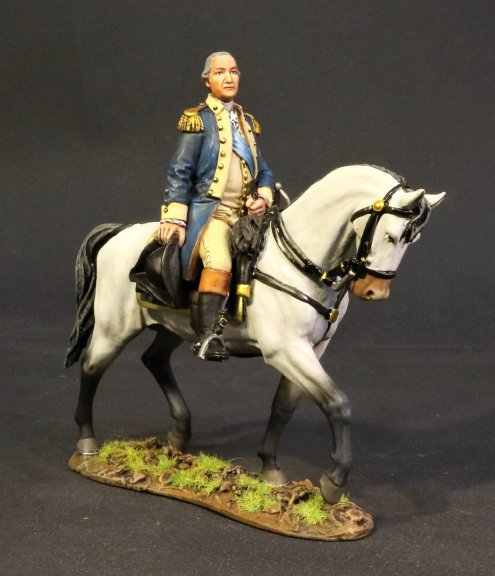
SGEN-GW01
DRUMS ALONG THE MOHAWK,
THE BATTLE OF SARATOGA 1777,
CONTINENTAL ARMY,
GENERAL GEORGE WASHINGTON.
(2pcs)
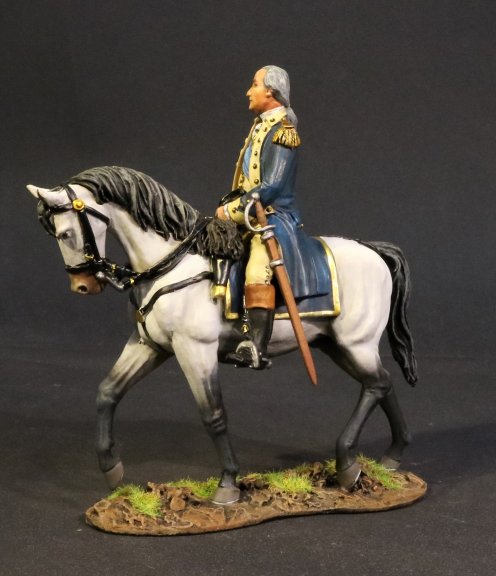
Washington's activities from late 1778 to 1780 were more diplomatic and organizational, as his army remained outside New York, watching Sir Henry Clinton's army that occupied the city. Washington strategized with the French on how best to cooperate in actions against the British, leading to ultimately unsuccessful attempts to dislodge the British from Newport, Rhode Island and Savannah, Georgia. His attention was also drawn to the frontier war, which prompted the 1779 Continental Army expedition of John Sullivan into upstate New York. When General Clinton sent the turncoat General Benedict Arnold to raid in Virginia, Washington began to detach elements of his army to face the growing threat there. The arrival of Lord Cornwallis in Virginia after campaigning in the south presented Washington with an opportunity to strike a decisive blow. Washington's army and the French army moved south to face Cornwallis, and a cooperative French navy under Admiral de Grasse successfully disrupted British attempts to control of the Chesapeake Bay, completing the entrapment of Cornwallis, who surrendered after the Siege of Yorktown in October 1781. Although Yorktown marked the end of significant hostilities in North America, the British still occupied New York and other cities, so Washington had to maintain the army in the face of a bankrupt Congress and troops that were at times mutinous over conditions and pay. The army was formally disbanded after peace in 1783, and Washington resigned his commission as commander-in-chief on December 23, 1783.
THE FIRST BATTLE OF SARATOGA 1777
THE BATTLE OF FREEMAN’S FARM, SEPTEMBER 19[SUP]th[/SUP] 1777
THE CONTINENTAL ARMY
The Continental Army was formed by the Second Continental Congress after the outbreak of the American Revolutionary War by the colonies that became the United States of America. Established by a resolution of the Congress on June 14, 1775, it was created to coordinate the military efforts of the Thirteen Colonies in their revolt against the rule of Great Britain. The Continental Army was supplemented by local militias and troops that remained under control of the individual states or were otherwise independent. General George Washington was the commander-in-chief of the army throughout the war.
THE 2[SUP]nd[/SUP] NEW HAMPSHIRE REGIMENT
The 2nd New Hampshire Regiment was formed in early May 1775, as the second of three Continental Army regiments raised by the state of New Hampshire during the American Revolutionary War. Its first commander was Colonel Enoch Poor, with Joseph Cilley as major. Many of the men who served in the unit hailed from southeastern New Hampshire and western Maine (then part of Massachusetts).
After Enoch Poor was promoted to Brigadier, Nathan Hale was commissioned colonel of the 2nd New Hampshire Regiment in April 1777.
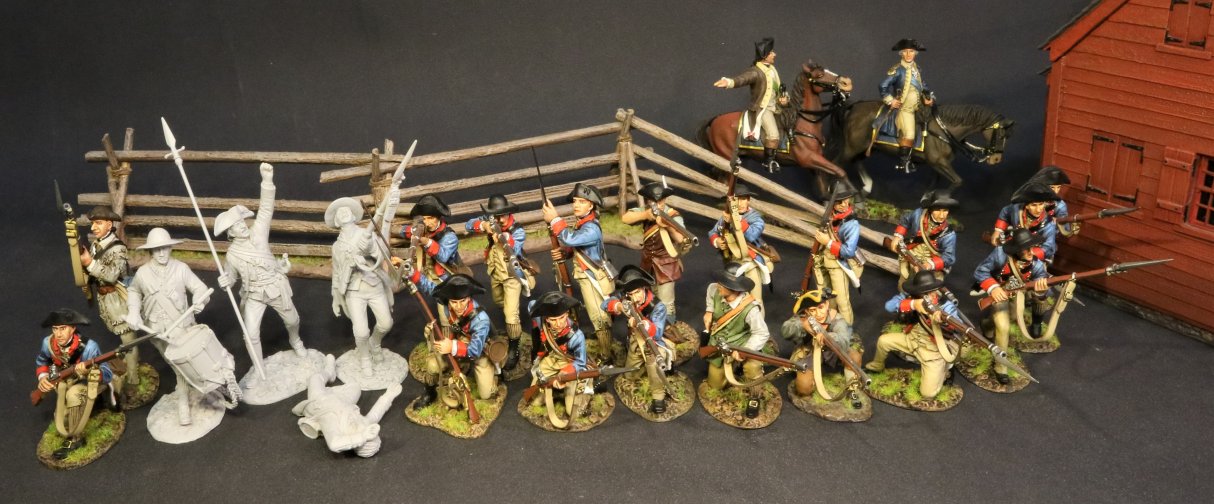
Flags or colors which belonged to the 2nd NH were captured at Fort Anne in July 1777 during the retreat from Fort Ticonderoga. After more than a century, they were returned from Britain, and are on display today at the Tuck Library of the New Hampshire Historical Society in Concord. They are among the only American battle flags from the Revolutionary War known to exist. The colors containing the motto "The Glory Not the Prey" are marked "2nd NH Regt", while the other colors captured at the time, the linked 13 rings, were likely a type of national color. Two other flags captured by the British at Skenesboro were also noted and they had similar designs, especially another with the 13 linked rings. While their colors were lost, the 2nd New Hampshire fought bravely in the autumn of 1777, where they were heavily engaged with British forces at Saratoga, leading to the surrender of General John Burgoyne's army.
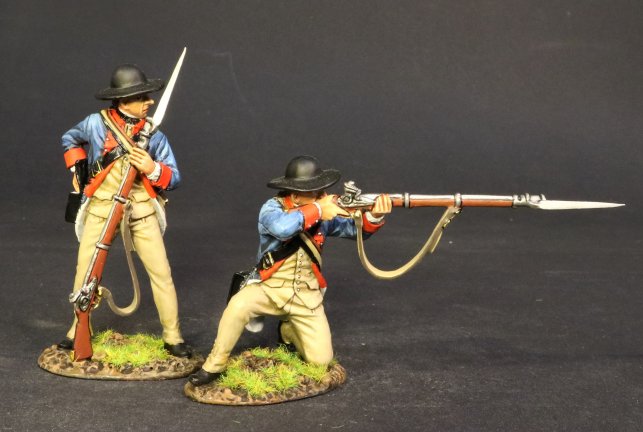
SNH-09
DRUMS ALONG THE MOHAWK,
THE BATTLE OF SARATOGA 1777,
CONTINENTAL ARMY,
THE 2[SUP]nd[/SUP] NEW HAMPSHIRE REGIMENT,
2 LINE INFANTRY.
(2pcs)
Please note that the New Hampshire Regiment figures will be re-paints of the previous Continental Figures.
THE EIGHTEENTH CENTURY COLLECTION
DRUMS ALONG THE MOHAWK
George Washington (February 22, 1732 – December 14, 1799) commanded the Continental Army in the American Revolutionary War (1775–1783).
In the early years of the war Washington was often in the middle of the action, first directing the Siege of Boston to its successful conclusion, but then losing New York City and almost losing New Jersey before winning surprising and decisive victories at Trenton and Princeton at the end of the 1776 campaign season. At the end of the year in both 1775 and 1776, he had to deal with expiring enlistments, since the Congress had only authorized the army's existence for single years. With the 1777 establishment of a more permanent army structure and the introduction of three-year enlistments, Washington built a reliable stable of experienced troops, although hard currency and supplies of all types were difficult to come by. In 1777 Washington was again defeated in the defense of Philadelphia, but sent critical support to Horatio Gates that made the defeat of Burgoyne at Saratoga possible. Following a difficult winter at Valley Forge and the entry of France into the war in 1778, Washington followed the British army as it withdrew from Philadelphia back to New York, and fought an ultimately inconclusive battle at Monmouth Court House in New Jersey.

SGEN-GW01
DRUMS ALONG THE MOHAWK,
THE BATTLE OF SARATOGA 1777,
CONTINENTAL ARMY,
GENERAL GEORGE WASHINGTON.
(2pcs)

Washington's activities from late 1778 to 1780 were more diplomatic and organizational, as his army remained outside New York, watching Sir Henry Clinton's army that occupied the city. Washington strategized with the French on how best to cooperate in actions against the British, leading to ultimately unsuccessful attempts to dislodge the British from Newport, Rhode Island and Savannah, Georgia. His attention was also drawn to the frontier war, which prompted the 1779 Continental Army expedition of John Sullivan into upstate New York. When General Clinton sent the turncoat General Benedict Arnold to raid in Virginia, Washington began to detach elements of his army to face the growing threat there. The arrival of Lord Cornwallis in Virginia after campaigning in the south presented Washington with an opportunity to strike a decisive blow. Washington's army and the French army moved south to face Cornwallis, and a cooperative French navy under Admiral de Grasse successfully disrupted British attempts to control of the Chesapeake Bay, completing the entrapment of Cornwallis, who surrendered after the Siege of Yorktown in October 1781. Although Yorktown marked the end of significant hostilities in North America, the British still occupied New York and other cities, so Washington had to maintain the army in the face of a bankrupt Congress and troops that were at times mutinous over conditions and pay. The army was formally disbanded after peace in 1783, and Washington resigned his commission as commander-in-chief on December 23, 1783.
THE FIRST BATTLE OF SARATOGA 1777
THE BATTLE OF FREEMAN’S FARM, SEPTEMBER 19[SUP]th[/SUP] 1777
THE CONTINENTAL ARMY
The Continental Army was formed by the Second Continental Congress after the outbreak of the American Revolutionary War by the colonies that became the United States of America. Established by a resolution of the Congress on June 14, 1775, it was created to coordinate the military efforts of the Thirteen Colonies in their revolt against the rule of Great Britain. The Continental Army was supplemented by local militias and troops that remained under control of the individual states or were otherwise independent. General George Washington was the commander-in-chief of the army throughout the war.
THE 2[SUP]nd[/SUP] NEW HAMPSHIRE REGIMENT
The 2nd New Hampshire Regiment was formed in early May 1775, as the second of three Continental Army regiments raised by the state of New Hampshire during the American Revolutionary War. Its first commander was Colonel Enoch Poor, with Joseph Cilley as major. Many of the men who served in the unit hailed from southeastern New Hampshire and western Maine (then part of Massachusetts).
After Enoch Poor was promoted to Brigadier, Nathan Hale was commissioned colonel of the 2nd New Hampshire Regiment in April 1777.

Flags or colors which belonged to the 2nd NH were captured at Fort Anne in July 1777 during the retreat from Fort Ticonderoga. After more than a century, they were returned from Britain, and are on display today at the Tuck Library of the New Hampshire Historical Society in Concord. They are among the only American battle flags from the Revolutionary War known to exist. The colors containing the motto "The Glory Not the Prey" are marked "2nd NH Regt", while the other colors captured at the time, the linked 13 rings, were likely a type of national color. Two other flags captured by the British at Skenesboro were also noted and they had similar designs, especially another with the 13 linked rings. While their colors were lost, the 2nd New Hampshire fought bravely in the autumn of 1777, where they were heavily engaged with British forces at Saratoga, leading to the surrender of General John Burgoyne's army.

SNH-09
DRUMS ALONG THE MOHAWK,
THE BATTLE OF SARATOGA 1777,
CONTINENTAL ARMY,
THE 2[SUP]nd[/SUP] NEW HAMPSHIRE REGIMENT,
2 LINE INFANTRY.
(2pcs)
Please note that the New Hampshire Regiment figures will be re-paints of the previous Continental Figures.


